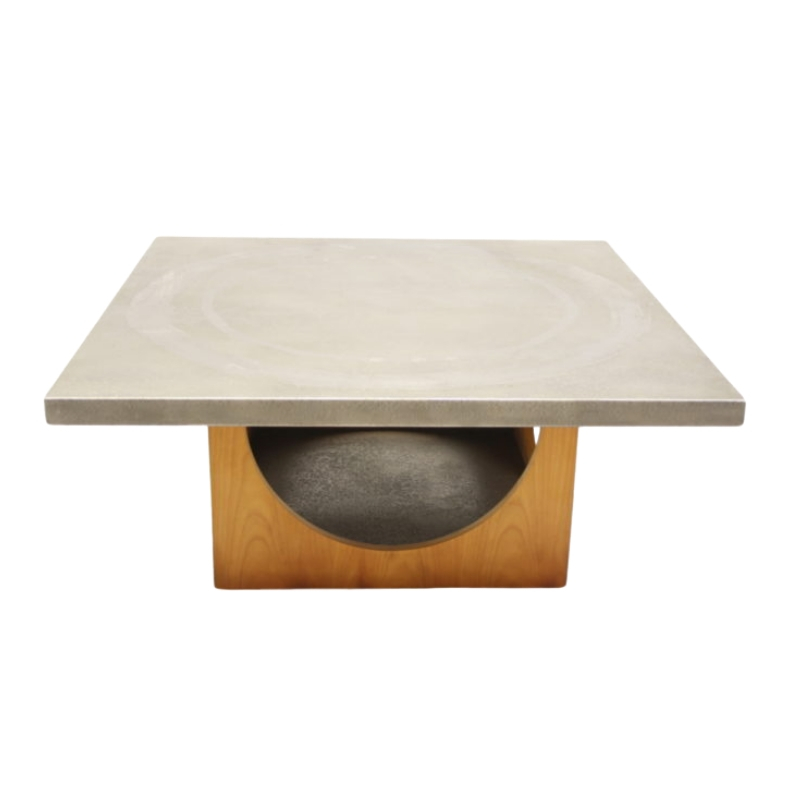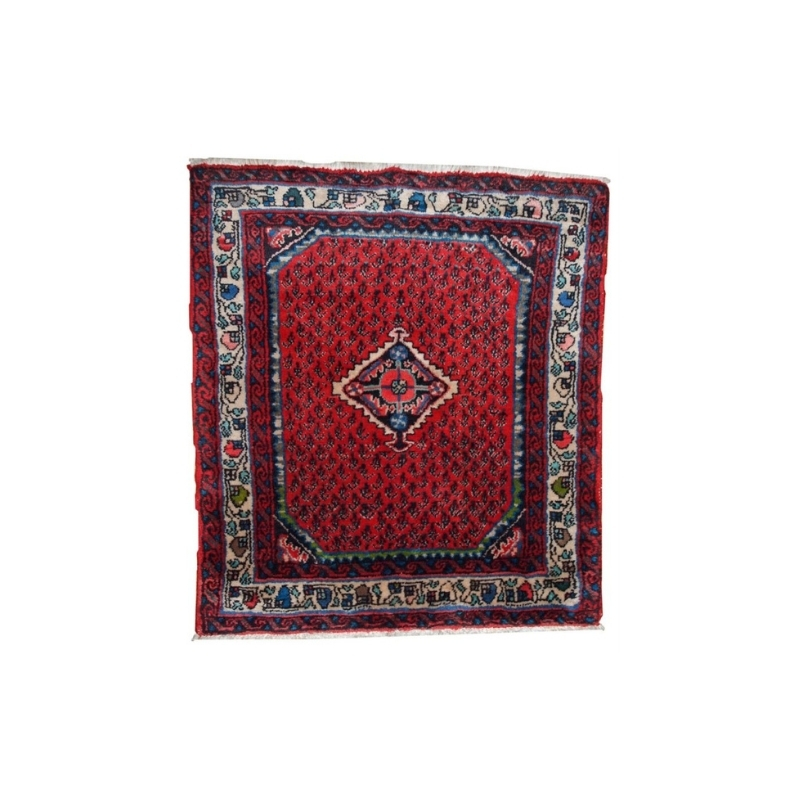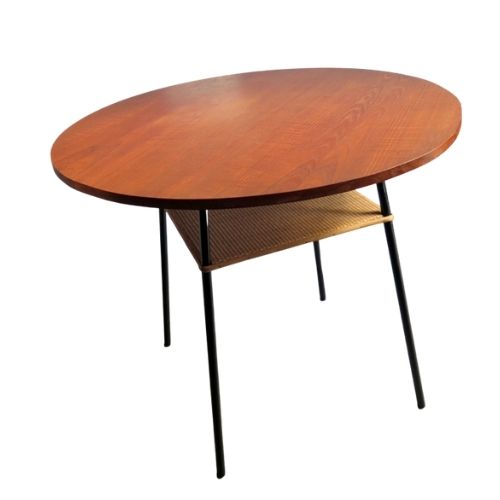One option could be that the pillows are not original, so maybe they were thinner originally and looked better with that frame. The feet are really puzzling as I can't think of a reason why they have been put there : stability of the chair?
I think this chair is maybe from Germany, inspired by Danish elementd.
Cheers
Ernest
If it's from the 50es or 60es I doubt the fabric would have remained so white. If you imagine it with a much thinner cushions and wool or kvadrat-like fabric, that would make more sense to me. But you see, I also recently said another chair was not even scandinavian and it turned out to be a nice piece (in need of serious restoration, but still nice). Anyway, that's a curious chair this one.
All the best,
Ernest.
Hi Dr. Poulet, to me it seems that these feet are there as in the picture that Herringbone has posted.
Here the only other picture available- not much more informative than the other one, if not for the detail on the armrest. I start to suspect this is not teak but rather afromosia, as it looks particularly shiny, if that matters.
Cheers
Ernest.
Yes I agree. There two possibilities here (or maybe more 🙂
1) The chair is Danish, very rare, from a non so famous designer/producer, so it would explain why it's so difficult to find it on the internet. I have tried with a large combinations of names and producers.
2) The chair is a post-copy inspired danish-chair, that would explain too why we can't find it. For the pillows I would not worry too much, wither they are original and odd as they look, or most likely they are not original and they should not look like this.
Cheers
Ernest.
A furniture historian will know what those chair feet are called but these were used extensively in the late Victorian period by Charles Eastlake and in a simplified form in English Arts & Crafts chairs both made in furniture workshops or mass produced in factories. Both Victorian & the Arts & Crafts Movement borrowed design elements from traditional furniture that dates back to the Middle Ages and even earlier.
I have also seen these used in furniture made by a small company in Britain called D. Meredew in the 1960s & 1970s.
If you need any help, please contact us at – info@designaddict.com









